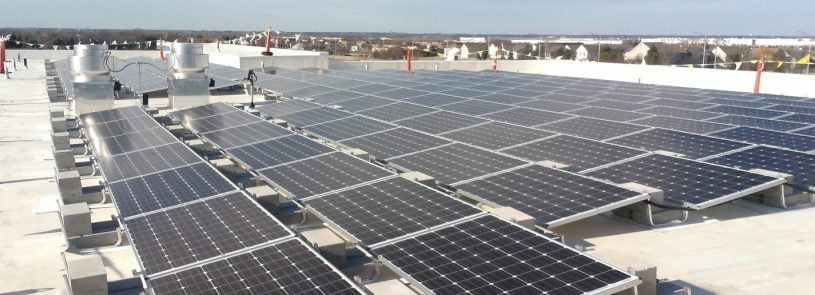Improving population health through the built environment (Podcast included)

Second in a series based on the IMEG executive guide, “Enhancing the Quadruple Aim through Data-driven Decisions in the Built Environment.” A related podcast can be found at the end of this post.
By Adam McMillen
The built environment of a healthcare facility or campus can help improve population health—one of the four goals of the Quadruple Aim. Those involved in design and construction can help an organization achieve this goal by sharing the data and research that show how the built environment can affect the health and livelihood of people near and far—and then implementing strategies that mitigate the negative impacts.
Strategies are numerous and include:
Reducing the carbon footprint. Studies confirm the negative public health impact of carbon emissions, the major factor driving climate change. According to Healthcare Without Harm, the healthcare sector is responsible for 8.5 percent of the U.S. carbon footprint and 4.4 percent of the global footprint.
The construction of one healthcare facility might seem like a drop in the bucket compared to the global carbon conundrum. However, local emissions all add up and contribute to climate change, and every bit of carbon reduction at a healthcare facility helps to improve population health—even for those who never step foot inside the building. Carbon reduction strategies are numerous and include:
- Building for energy efficiency. This includes proper building orientation and siting to take advantage of passive heating, shading, and ventilation to reduce the size and energy use of HVAC equipment; maximizing the use of natural light; building envelope measures and investing in energy-efficient mechanical equipment.
- Using low-embodied carbon materials and equipment. In addition to reducing carbon emissions by utilizing high-performance, energy-efficient mechanical equipment, a healthcare facility can further reduce its effect on the environment by reducing its embodied carbon—the greenhouse gas emissions arising from the extraction, manufacturing, transportation, installation, maintenance, and disposal of building materials and equipment.
- Utilizing renewable energy. A new facility offers a prime opportunity to commit to solar panels, geothermal, wind, and other renewable energy sources.
Adding green space. Green space not only provides respite for patients and caregivers, thus improving the quality of care and outcomes, it also is a major contributor to improved public health. According to the World Health Organization, urban green space leads to better air quality, improvements in mental health, more opportunities for physical activity, and less overall stress.
Reducing runoff. Water runoff carries oils, pesticides, bacteria, dirt, and other toxic materials into the stormwater removal systems and eventually into the water supply. Runoff is particularly troublesome for commercial building structures—including healthcare facilities and campuses—which have large building footprints, parking lots, and roadways that cover large areas of the ground.
By understanding these and other relationships between the built environment and communities, designers and builders can help a healthcare facility reduce its negative impacts on population health.
Listen to the podcast:
Also in this series:
- The Quadruple Aim & The Built Environment: Healthcare’s Dynamic Duo
- Reducing the cost of care in the built environment
- Enhancing the patient experience through the built environment
- Improving provider satisfaction through the built environment
For more information download a copy of the IMEG executive guide, “Enhancing the Quadruple Aim through Data-driven Decisions in the Built Environment.”












